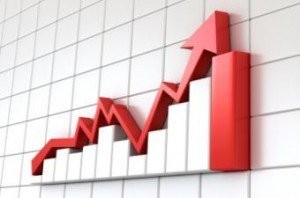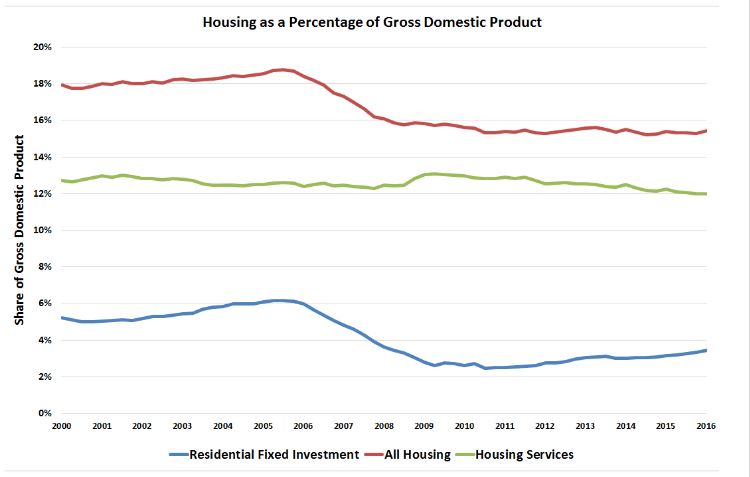 The third and final estimate for Q1’s real Gross Domestic Product (GDP), released on Tuesday by the Bureau of Economic Analysis, improved to an annual rate of 1.1 percent, and housing’s share of the GDP went up right along with it.
The third and final estimate for Q1’s real Gross Domestic Product (GDP), released on Tuesday by the Bureau of Economic Analysis, improved to an annual rate of 1.1 percent, and housing’s share of the GDP went up right along with it.
According to the National Association of Home Builders (NAHB), housing’s share of the GDP rose slightly in the third Q1 estimate up to 15.4 percent, while residential fixed investment (RFI), the home building and remodeling component of GDP, expanded to 3.4 percent.
Post-crisis, the GDP has generally struggled in the first quarter; in the three estimates for Q1 2016, the GDP progressed from 0.5 to 0.8 to 1.1 percent. The increase in real GDP up to 1.1 percent reflected positive contributions in the categories of personal consumption expenditures (1.02 percent), government consumption expenditures (0.23 percent), residential fixed investment (3.4 percent), state and local government spending (0.3 percent), and exports (0.4 percent). These were partly offset by negative contributions from nonresidential fixed investment (-0.6 percent), private inventory investment (-0.2 percent), and federal government spending (-0.1 percent).
“For the first quarter, RFI was 3.4 percent of the economy, reaching a $568 billion seasonally adjusted annual rate (SAAR) in inflation-adjusted 2009 dollars,” wrote David Logan, Director of Tax Policy Analysis with NAHB. “This is the highest quarterly rate for RFI in more than eight years. The first quarter growth for RFI added 0.5 points to the headline GDP growth rate (i.e. GDP would have only expanded 0.6 percent absent the RFI contribution), the largest contribution since 2012.”
 Housing services, which include gross rents (including utilities) paid by renters, utility payments, and owners’ imputed rent (estimate of the cost to rent owner-occupied units), totaled 12 percent for the final estimate of Q1 ($1.98 trillion). According to Logan, without this measure, increases to homeownership would cause the GDP to decline. These two numbers together (12 percent for housing services and 3.4 percent for RFI) made up housing’s 15.4 percent share of the GDP in Q1.
Housing services, which include gross rents (including utilities) paid by renters, utility payments, and owners’ imputed rent (estimate of the cost to rent owner-occupied units), totaled 12 percent for the final estimate of Q1 ($1.98 trillion). According to Logan, without this measure, increases to homeownership would cause the GDP to decline. These two numbers together (12 percent for housing services and 3.4 percent for RFI) made up housing’s 15.4 percent share of the GDP in Q1.
The GDP for Q2 is expected to grow at a faster rate, as it typically has in the second quarter post-crisis. In 2015, the final estimate for Q2 GDP was 3.9 percent.
“Looking ahead, economic forecasters expect faster GDP growth in the second quarter of 2016,” NAHB Senior Economist Michael Neal said. “Business investment, especially activity outside of the energy sector, is expected to rebound. In addition, early indications point to a stronger contribution of personal consumption expenditures to overall growth. However, though dissipating, downside risks from the international sector remain. The economic headwinds from the United Kingdom’s departure from the European Union could lower future growth prospects for the U.S. However, the economic effects from ‘Brexit’ are likely to be minor.”

 DSNews The homepage of the servicing industry
DSNews The homepage of the servicing industry










